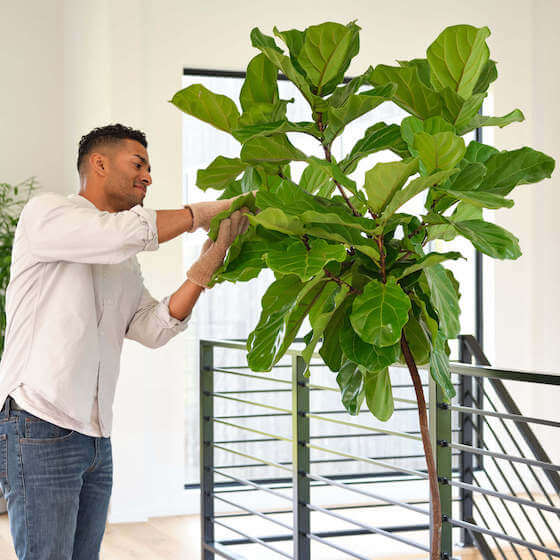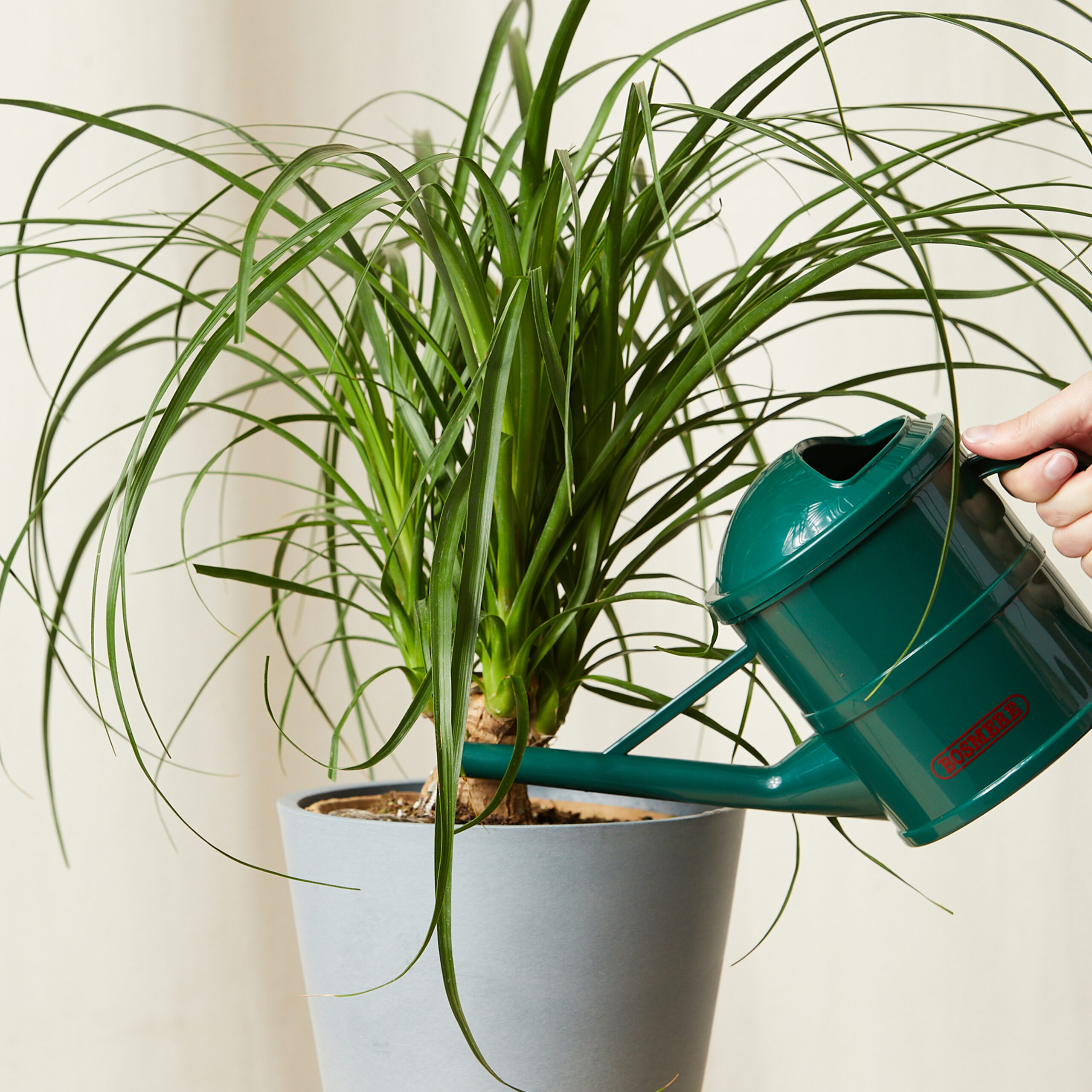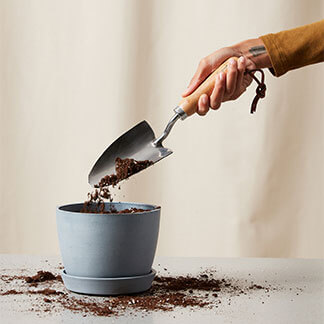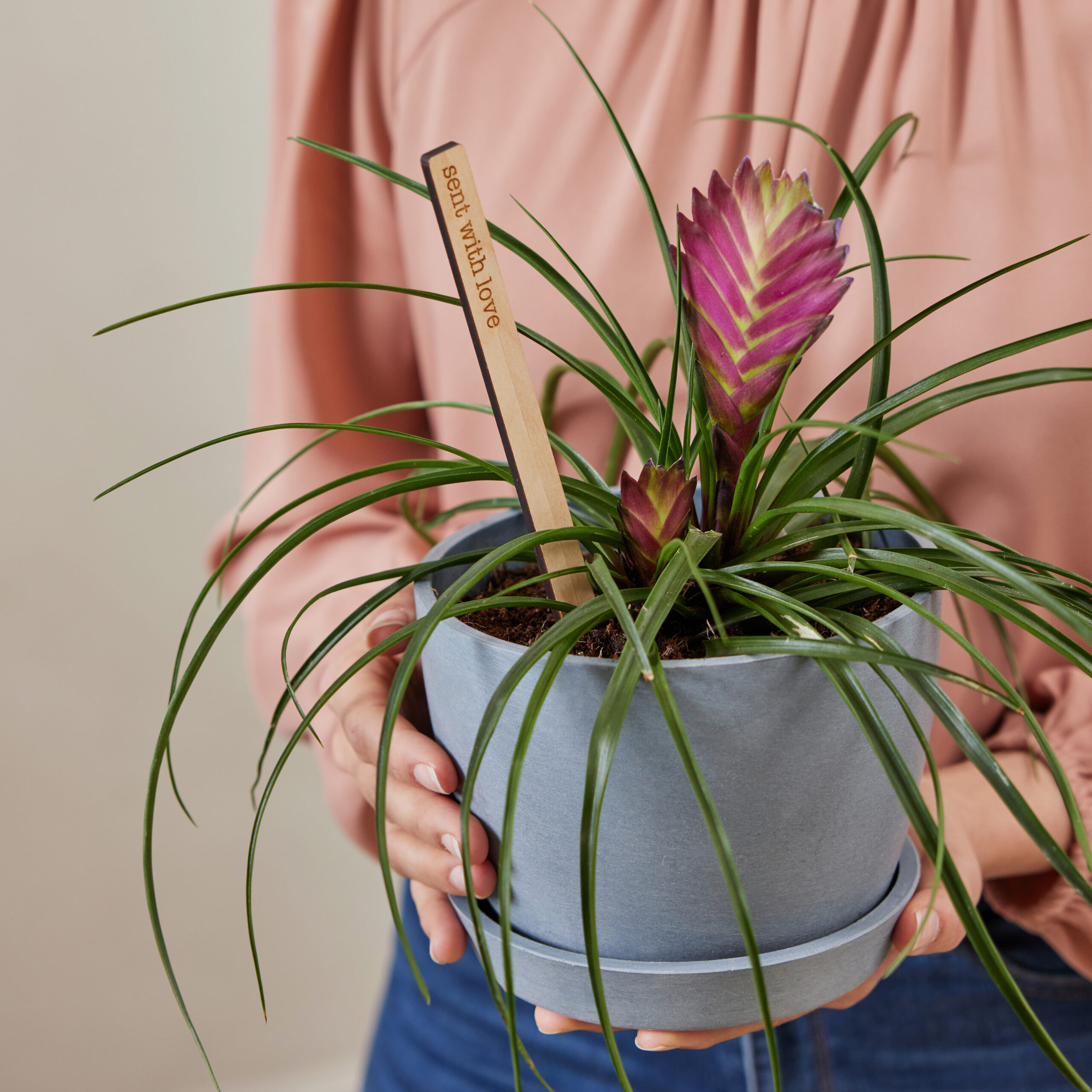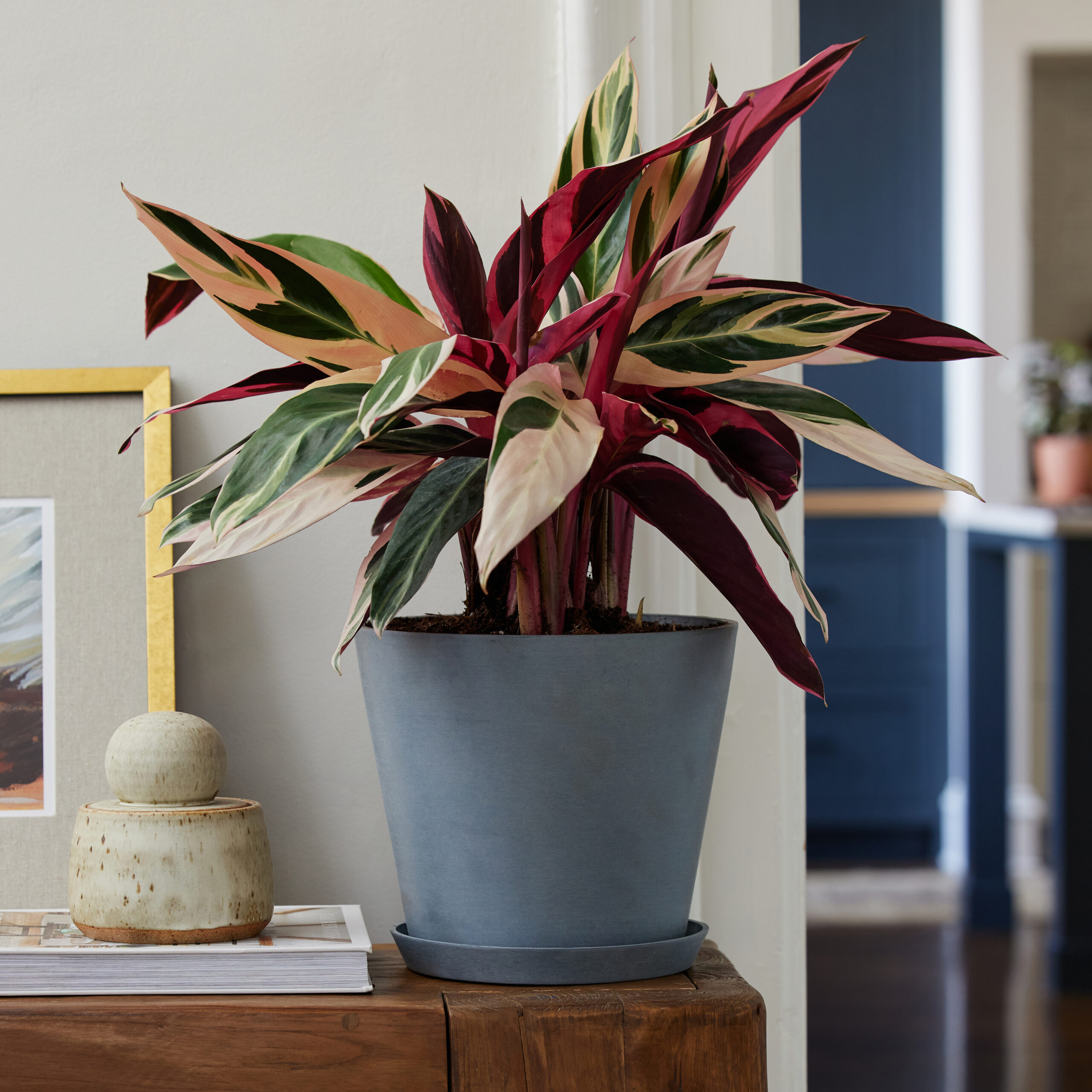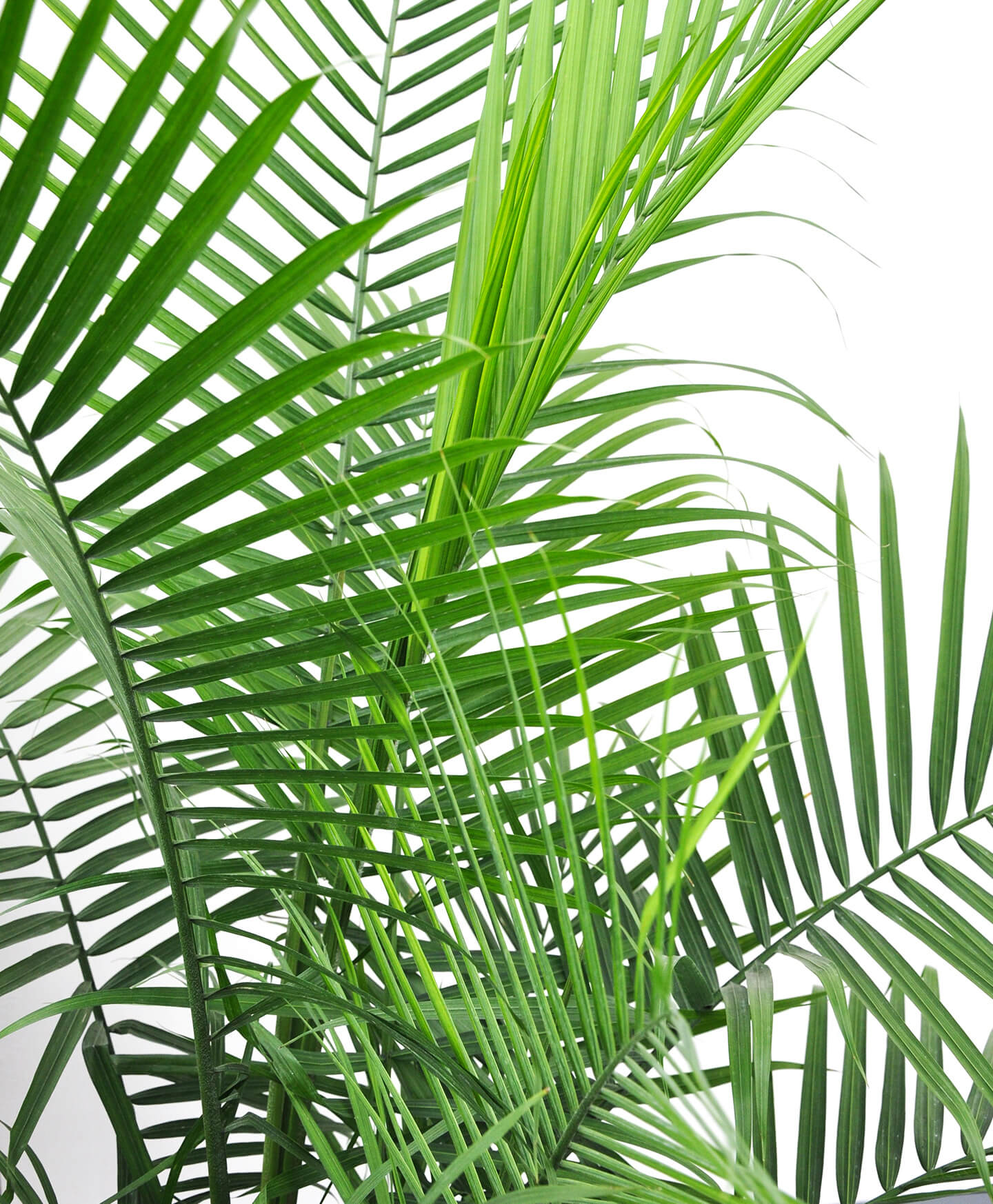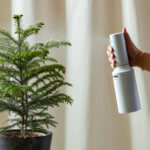Whether you’re dealing with a bamboo palm, areca palm, ponytail palm, or majesty palm, this guide covers the most common reasons why your palm’s tips are turning brown—and simple fixes to get your plant looking healthy again.
Water Frequency
Palm leaves turning brown can often be traced back to watering habits. These plants don’t like extremes—overwatering can lead to root rot, while underwatering causes dry, browning tips.
Let the top 50% of the soil dry out between waterings. When it’s time to water, saturate the soil evenly until excess drains from the bottom of the pot. Always discard water in the saucer to prevent soggy roots.
Water Quality
If you’re only seeing brown tips on the palm’s leaves (not entire fronds), your tap water may be to blame. Municipal water often contains chlorine, fluoride, and salts that build up in the soil and scorch delicate leaf tips. Try using distilled water or rainwater instead.
Notice a white crust on the soil surface? That’s likely salt buildup. Gently scrape it off and flush the pot with clean water—use about four times the container volume, and let it drain fully.
Over-Fertilization
Palms don’t need frequent feeding. Too much fertilizer—or applying it to dry soil—can burn the roots and cause browning leaf tips.
Use a balanced fertilizer for palms once a month during the spring and summer growing season, and only when the soil is damp. Skip feeding in fall and winter, when most palms naturally slow down.
Cold Injury
Palms are tropical plants that thrive in warm, stable environments. If your palm is exposed to cold air, AC vents, or drafty windows, it may respond with brown tips or yellowing leaves.
Keep your palm in a cozy indoor spot between 65–80°F and avoid sudden temperature changes.
Natural Browning
Some browning is completely normal. Palms naturally shed older leaves as they grow—especially lower fronds. If the rest of the plant looks healthy and vibrant, and the browning is limited to older foliage, your palm is just moving through its natural cycle.
Should I Cut Off Brown Palm Leaves?
Yes, you can—and should—cut off brown palm leaves to keep your plant healthy and looking its best. Removing damaged leaves helps your palm focus energy on new, healthy growth instead of trying to repair leaves that are beyond saving.
How to Cut Off Brown Palm Leaves
- Gather your supplies. You’ll need a pair of sharp scissors or pruning shears, some rubbing alcohol, and paper towel. (Alcohol wipes that come in a first-aid kit work great!)
- Wipe the blades of your sharp scissors or pruning shears with rubbing alcohol before you begin and between each snip. If you are just removing brown crispy leaves due to aging, lack of moisture, or sunburn spots; moisten the blades with water before cutting–this will help prevent healthy tissue damage.
- Cut leaves that are entirely brown or yellow at the base – near the stem or at the soil. Be sure not to tug the leaves, as this can damage healthy parts of the plant. If only part of the leaf is brown or yellow, remove only the affected area.
Important: Be careful not to remove more than 30% of the entire plant while pruning. You may need to prune in stages to avoid removing too many leaves at once.
